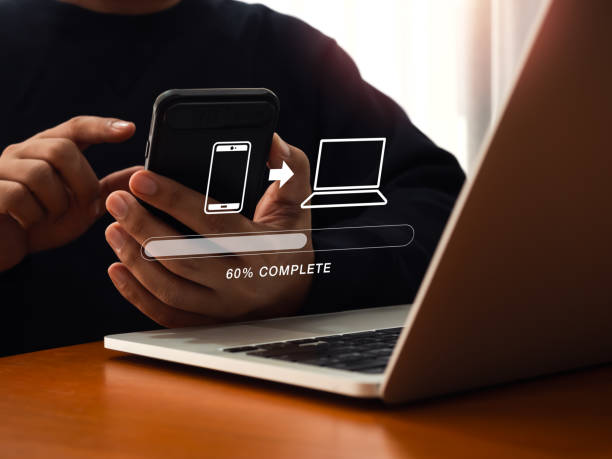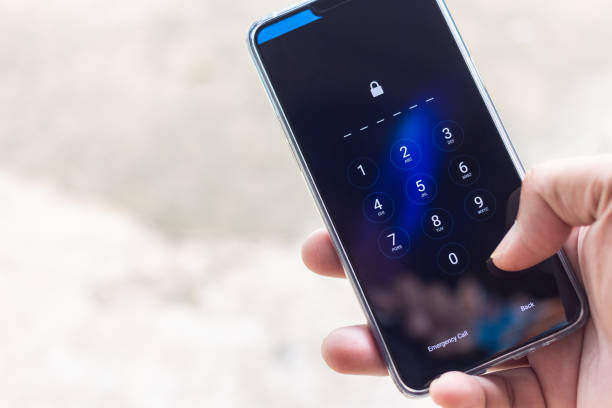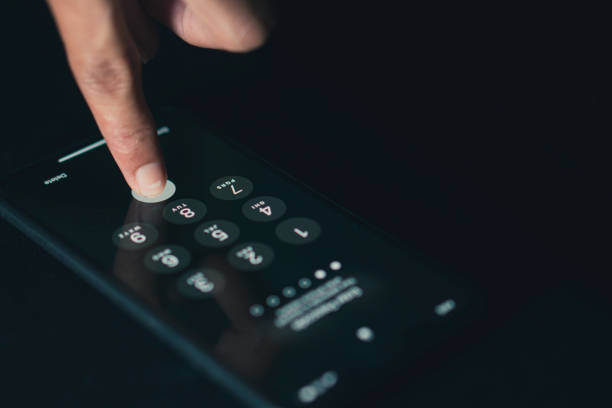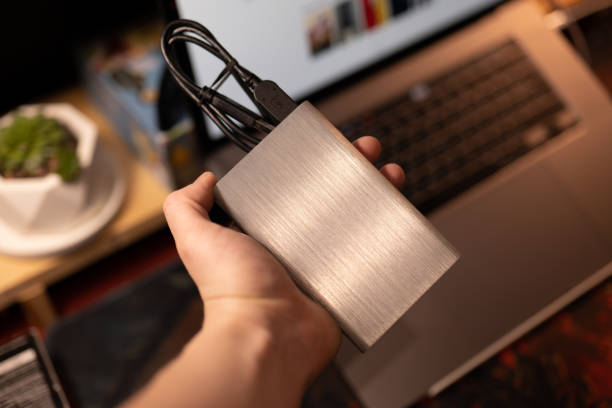In the current era, where mobile phones have become a primary medium of communication, iPhones hold more significance than just being devices for making phone calls. They are storage houses that safeguard personal recollections to business files and everything in between. Being locked out of your iPhone is disastrous as it restricts access to stored data on it. This raises an essential question: Can you backup a locked iPhone? This article dives deep into this query, exploring various scenarios and solutions to ensure your data remains safe, even if your iPhone is locked.
What Does It Mean When an iPhone Is Locked?
Before addressing whether you can backup a locked iPhone, it’s crucial to understand what “locked” means in this context. An iPhone can be locked in several ways:
Screen Lock
A screen lock on your iPhone requires a passcode, Touch ID, or Face ID to gain access. It serves as a primary security measure to protect your device from unauthorized use.
- Passcode: Typically a numeric or alphanumeric code set by the user. It acts as the initial barrier preventing unauthorized access to personal data and apps stored on the iPhone.
- Touch ID: Introduced with iPhone 5s and later models, Touch ID uses fingerprint recognition technology embedded in the device’s Home button. It offers a convenient and secure way to unlock the iPhone and authorize purchases without entering a passcode.
- Face ID: Integrated into iPhone X and newer models, Face ID utilizes advanced facial recognition algorithms to securely unlock the device. It maps and analyzes over 30,000 invisible dots to create a precise depth map of the face, ensuring accurate and reliable authentication.
Activation Lock
Activation Lock is tied to Apple’s Find My iPhone service, which enhances the security of your device in case of loss or theft.
- Find My iPhone: Enabled via iCloud settings, Find My iPhone allows you to locate your device on a map, play a sound, put it in Lost Mode, or remotely erase all personal information. Activation Lock automatically engages when Find My iPhone is activated, requiring your Apple ID and password to disable it.
- Lost Mode: In the event your iPhone is lost or stolen, Lost Mode lets you remotely lock the device with a custom message and contact number displayed on the lock screen. It prevents unauthorized access while providing information on how to return the device if found.
SIM Lock
SIM lock restricts your iPhone to operate only with specific carriers or networks designated by the carrier.
- Carrier Restrictions: iPhones purchased through carriers often come with SIM locks that tie the device to that carrier’s network. This is commonly done with subsidized phones to ensure the carrier recoups the cost of the device over the contract period.
- Unlocking Process: You can request an unlock from your carrier once you’ve fulfilled the contractual obligations. Once unlocked, your iPhone can be used with SIM cards from other carriers, providing more flexibility in choosing a network provider.
Methods to Backup a Locked iPhone
When pondering, “Can you backup a locked iPhone?” the answer varies based on the lock status and the tools at your disposal. Here are several methods you might consider:
Using iCloud Backup
iCloud remains a robust solution for backing up your iPhone data, even when the device is locked. If iCloud Backup was enabled before the device became locked, you can proceed with these steps:
- Automatic Backup: iCloud Backup automatically initiates backups when your iPhone is connected to Wi-Fi, plugged into power, and in sleep mode. This ensures that your data is continuously protected and accessible.
- Checking Backup Status: To verify the status of your iCloud backups, navigate to Settings > [your name] > iCloud > Manage Storage > Backups. Here, you can view the date and size of your last backup, ensuring you have the most recent data securely stored in iCloud.
Using iTunes or Finder
If you have previously synced your iPhone with iTunes or Finder (on macOS Catalina and later), you can still perform a backup even if the device is locked:
- Connecting Your iPhone: Utilize the original USB cable to connect your locked iPhone to the computer that you have previously synced with.
- Recognizing the Device: iTunes or Finder should recognize your iPhone as a trusted device, allowing you to proceed with the backup process without unlocking the device.
- Initiating the Backup: Within iTunes or Finder, select your device and choose ‘Back Up Now’. This manual backup method ensures that all your iPhone’s data, including apps, settings, and media, is securely backed up to your computer.
Using Third-Party Tools
While not endorsed by Apple and potentially risky, third-party software solutions claim to offer backup capabilities for locked iPhones:
- Authorization Requirements: Many third-party tools require prior authorization, such as installing the software on both the iPhone and a computer, or gaining permission from the device owner.
- Security Considerations: Using third-party tools may involve exploiting system vulnerabilities to bypass iPhone locks, which can compromise data security and legality.
- Research and Caution: Before using any third-party tool, conduct thorough research to understand its capabilities, legality, and potential risks. Always prioritize data security and legality when choosing alternative backup methods.
Step-by-Step Guide to Backup a Locked iPhone Using iTunes

Here’s a detailed guide to help you understand how to backup a locked iPhone using iTunes:
Connect Your iPhone to Your Computer
To begin the process of backing up your locked iPhone using iTunes, follow these detailed steps:
- Use the USB Cable: Connect your iPhone to your computer using the USB cable that came with your device. This physical connection is necessary to establish communication between your iPhone and iTunes.
- Verify Computer Sync: Ensure that the computer you’re using is one that you have previously synchronized with your iPhone. This step is crucial as iTunes requires a trusted relationship with the device to proceed with backups.
Open iTunes and Select Your Device
After establishing a physical connection, proceed with the following actions:
- Launch iTunes or Finder: Depending on your operating system (macOS Catalina or later), open iTunes on Windows or Finder on Mac.
- Locate Your Device: Look for the device icon located in the upper-left corner of the iTunes window or in the sidebar of Finder. Click on it to proceed to the device management screen.
Initiate Backup in iTunes
Once your device is recognized, proceed with initiating the backup process:
- Navigate to the Summary Tab: Within iTunes or Finder, navigate to the ‘Summary’ tab specific to your connected iPhone.
- Select Backup Options: Under the ‘Backups’ section, choose ‘This Computer’ to ensure that the backup is stored locally on your computer’s hard drive.
- Start the Backup: Click on ‘Back Up Now’ to commence the backup process. This action prompts iTunes to begin copying all essential data from your locked iPhone to your computer.
Enable Encryption for Added Security
For enhanced security measures, consider encrypting your backup file:
- Encrypt Local Backup: Check the box labeled ‘Encrypt local backup’ within the iTunes backup settings. This step ensures that all your backed-up data is encrypted and secure.
- Set a Backup Password: Enter a strong password to protect your encrypted backup. This password is crucial for accessing and restoring the backup data, ensuring only authorized users can retrieve sensitive information.
Change Backup Location to External Hard Drive (Optional)
If you prefer to store your backups on an external hard drive for additional security or space management, follow these optional steps:
- Locate iTunes Backup Directory: Find the default iTunes backup directory on your computer, typically located at ~/Library/Application Support/MobileSync/Backup/ on macOS.
- Copy Backup to External Drive: Copy the entire backup folder to your external hard drive. This action ensures that your backups are stored separately from your computer’s internal drive, reducing the risk of data loss due to hardware failures or system issues.
Recovery Options: What to Do If You Can’t Backup Your Locked iPhone
If you find yourself unable to backup your locked iPhone using the methods described above, you might wonder about your next steps. Here’s a look at some recovery options that could help you regain access to your device and potentially your data:
Recovery Mode
Recovery mode can help restore a device when you can’t remember your passcode or if your iPhone is experiencing serious software issues:
| Action | For iPhone 8 and later | For iPhone 7 and 7 Plus | For iPhone 6s and earlier |
| Entering Recovery Mode | Quickly press and release the Volume Up button, then the Volume Down button. Press and hold the Side button until the recovery mode screen appears. | Press and hold the Side and Volume Down buttons simultaneously until the recovery mode screen appears. | Press and hold both the Home and Top (or Side) buttons simultaneously until the recovery mode screen appears. |
| Restore iPhone | Connect your iPhone to your computer using the USB cable. Open iTunes (or Finder on macOS Catalina and later). Select ‘Restore’ when prompted to reset your iPhone to factory settings. This action erases all data and settings, offering a fresh start for your device. | Connect your iPhone to your computer using the USB cable. Open iTunes (or Finder on macOS Catalina and later). Select ‘Restore’ when prompted to reset your iPhone to factory settings. This action erases all data and settings, offering a fresh start for your device. | Connect your iPhone to your computer using the USB cable. Open iTunes (or Finder on macOS Catalina and later). Select ‘Restore’ when prompted to reset your iPhone to factory settings. This action erases all data and settings, offering a fresh start for your device. |
Apple Support
If all else fails, contacting Apple Support can provide guidance and additional options. They can assist with:
- Account Recovery: Help in recovering your Apple ID, which is crucial if you’ve forgotten your credentials.
- Technical Support: Addressing any potential software issues that could be causing your iPhone to remain locked.
- Hardware Issues: If your iPhone’s locking issue is related to hardware, such as a faulty Touch ID or Face ID sensor, Apple can provide repair options.
Preventive Measures: Avoid Getting Locked Out

Prevention is always better than cure. Here are some tips to avoid getting locked out of your iPhone:
Regular Backups
To mitigate the risk of being locked out of your iPhone, regular backups play a crucial role in safeguarding your data:
- Using iCloud Backup: Activate iCloud Backup to automatically store your iPhone’s data securely in the cloud. This method ensures that your most recent data—including photos, contacts, and settings—is always accessible from any device linked to your iCloud account.
- Using iTunes on Your Computer: Regularly sync your iPhone with iTunes on your computer. This approach provides a local backup that you can restore from in case of emergencies or if your device becomes inaccessible due to a lockout situation.
Strong yet Memorable Passcodes
Choosing a robust and memorable passcode enhances both security and accessibility:
- Create a Complex Passcode: Opt for a combination of numbers, letters, and special characters to create a strong barrier against unauthorized access. Avoid using easily guessable patterns or sequences.
- Consider Using a Passphrase: Instead of a traditional passcode, use a passphrase—a sequence of random words or a meaningful phrase. Passphrases are easier to remember but harder for others to crack, providing a balance between security and usability.
Use Family Sharing
Family Sharing provides additional support to prevent lockouts and assist in account recovery:
- Shared Purchases and Subscriptions: Enable Family Sharing to share purchases, such as apps, music, movies, and subscriptions, among family members. This ensures access to essential services without individual account complications.
- Account Recovery Assistance: Leverage Family Sharing for account recovery purposes. Family members can assist in resetting passwords or recovering accounts through shared access, reducing the risk of permanent lockouts and facilitating swift recovery processes.
Tips and Best Practices
Maintaining the security of your iPhone is crucial, not only to prevent unauthorized access but also to ensure that your data is always accessible to you. Here are some tips and best practices for enhancing your iPhone’s security:
Update Regularly
Ensure your iPhone’s operating system is up to date. Software updates often include security patches that protect against vulnerabilities.
Use Strong Authentication Methods
Maximize the security features available on your iPhone:
- Enable Face ID or Touch ID: These biometric options provide a higher level of security compared to a standard passcode.
- Set a Strong Passcode: Opt for a longer passcode that includes a combination of numbers, letters, and symbols.
Leverage Find My iPhone
This feature not only helps in locating your iPhone but also protects your data if the device is lost or stolen:
- Activation Lock: Automatically enabled when you turn on Find My iPhone, it prevents anyone else from using your iPhone.
- Remote Wipe: If you lose your iPhone, you can erase all data remotely, protecting your sensitive information.
Be Cautious with Third-Party Apps
Only download apps from trusted sources such as the Apple App Store. Be wary of granting extensive permissions to apps unless they are clearly needed for the app to function.
Conclusion
So, can you back up a locked iPhone? Yes, but the methods and success largely depend on your previous settings and interactions with Apple services like iCloud and iTunes. By understanding the different types of locks and the corresponding backup options available, you can ensure your data remains accessible and secure, even when locked out of your device.
FAQ
No, if you never synced your iPhone with iTunes or iCloud, there is no official way to back up a locked iPhone without the password.
If you cannot remember any credentials, you may need to reset your iPhone, which erases all data. Contact Apple Support for detailed guidance.
Some third-party tools can be effective, but their safety and legality should be carefully evaluated. Always use reputable sources and check reviews.




